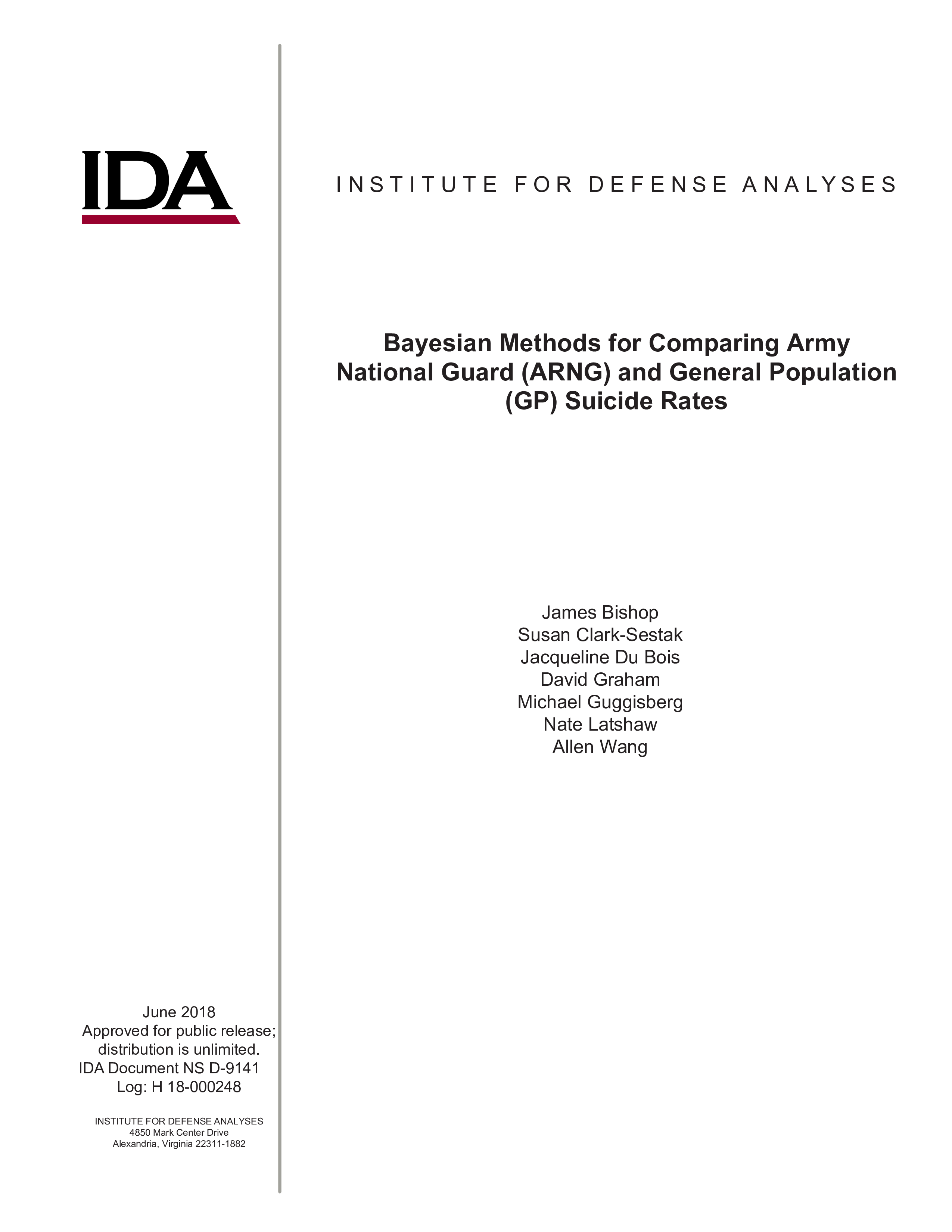Bayesian Methods for Comparing Army National Guard (ARNG) and General Population (GP) Suicide Rates
June, 2018
IDA document: D-9141
FFRDC: Systems and Analyses Center
Type: Documents,
Talent Management
Division: Strategy, Forces and Resources Division
Authors:
IDA document: D-9141
FFRDC: Systems and Analyses Center
Type: Documents
Division: Strategy, Forces and Resources Division
Authors:
Authors
James Bishop, Susan Clark-Sestak, Jacqueline Du Bois, David Graham, Michael Guggisberg, Nate Latshaw, Allen Wang
See more authors

